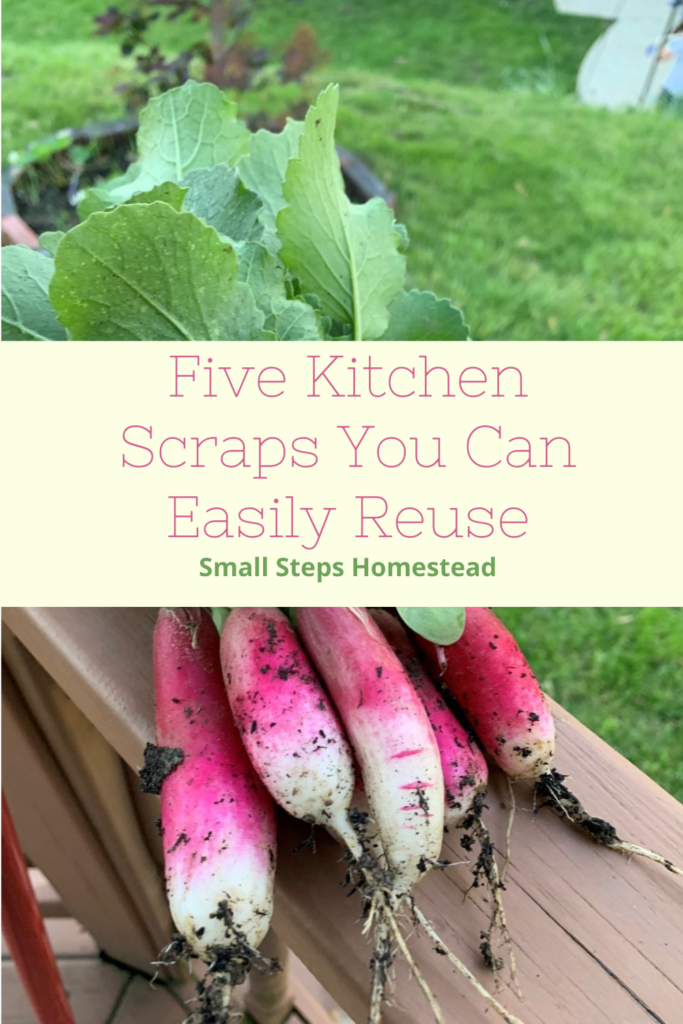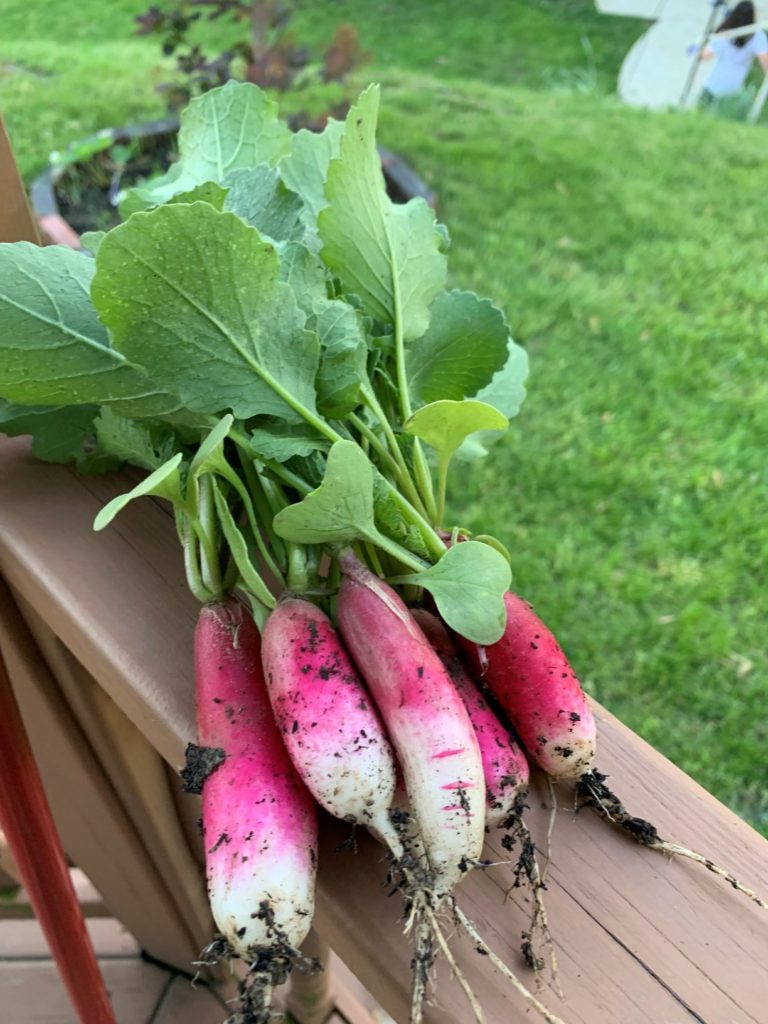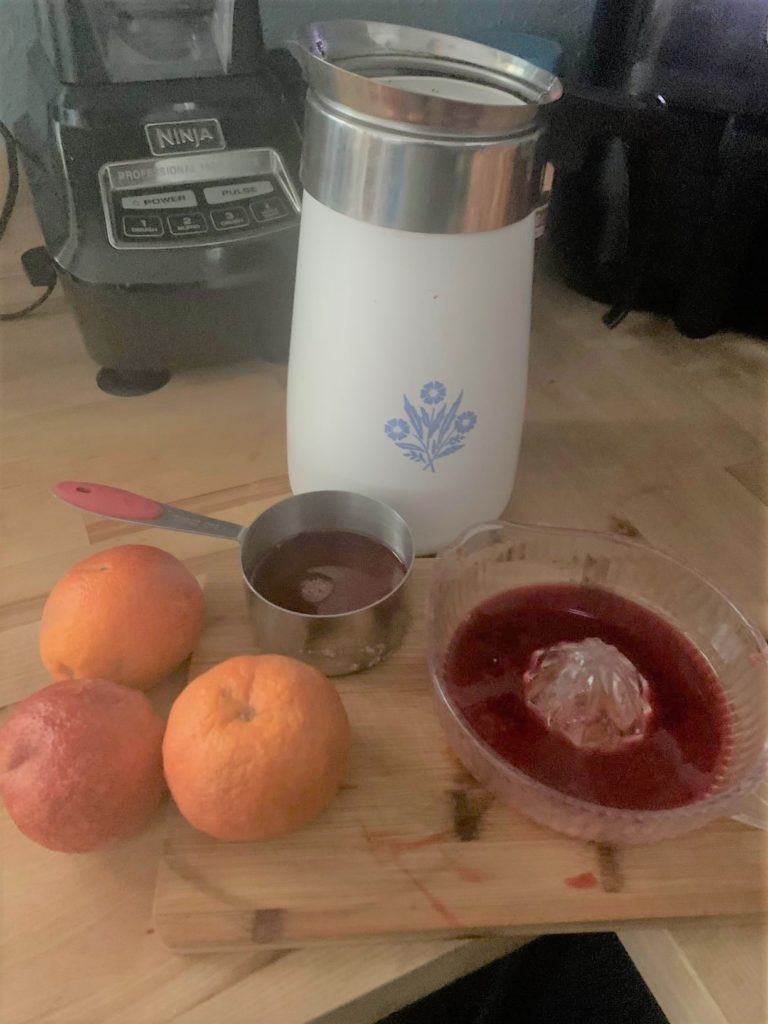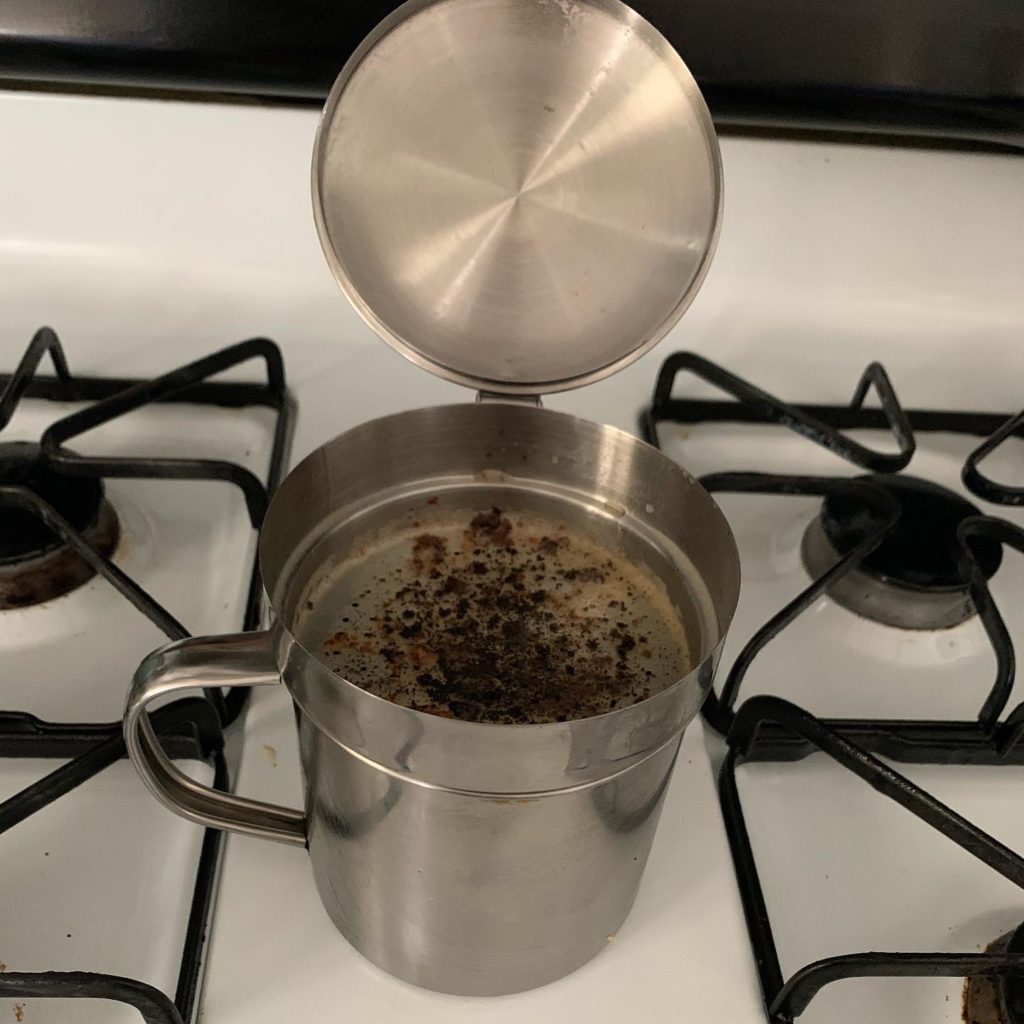Have you ever thought about how many reusable items we throw away every day? I have, and in this post I am sharing Five Kitchen Scraps You Can Easily Reuse.
I have become well known among family and friends for my frugal ways. They have seen first hand my tips and tricks for saving money while reducing waste in my home. Several of them have even told me that I need to share these tips with the world. So here we go. I’m hoping this will be the first part of a series but I’m starting with Five Simple Kitchen Scraps You Can Easily Reuse.

Now to be honest not all of these ideas are mine. Some of them I learned from my mother and grandmothers, and others I have gleaned from others over the years.
However, If there has ever been a year for us to look at the things we throw away, this is it. Our grandparents learned this lesson well during the Great Depression, and I think it is time we bring it back.
1. Chicken Bones
I’m sure most of you have heard that chicken soup is good for all that ails you? It’s true and we should not be tossing out those chicken bones. Bone broth has made a big come back in the last few years as we are rediscovering all of its benefits. Bones are rich in vitamins and minerals such as calcium, magnesium, and Vitamin A. They also contain collagen, which gives bone broth it’s gelatin. Recent studies have shown that the collagen in bone broth can help with joint health, osteoarthritis, inflammation, and gut health.
Honestly, bone broth is so easy to make and doesn’t require any special equipment. I usually like to roast a chicken about once a week, to use in casseroles, salads, and tacos. After it cools, I debone it. I put the bones in my Instant pot with vegetable scraps (see below), 2 Tbsp. of apple cider vinegar, and cover with water. I will cook it under pressure on the soup setting for 2 hours. Alternatively, you can cook it on the stove for 4-6 hours or in a slow cooker on low for 9-12 hours.
It really is as easy as that. After it is done, you strain off all the solids and you are left with a beautiful bone broth. The nice thing is if you don’t have the time to make the bone broth the day you cooked your chicken, you can freeze the bones until later.
Now, if you are feeling really ambitious, you can add chicken feet to your pot. I usually add 4-5 chicken feet and it gives me added gelatin. Gelatin is always a good thing when it comes to bone broth. You can find chicken feet at most health food stores but I buy mine from our local farmer.
2. Vegetable Scraps
Vegetable scraps go right along with the chicken bones. As you are cleaning vegetables save any part of the vegetable you wouldn’t cook with. Onion and carrot peels, carrot and zucchini ends, thicker pieces of celery, green onion tops, and herb stalks. As long as it is not rotten you can save it.

I keep a bag in my freezer and add to it as I get scraps. Then when I want to make bone broth I pull out a handful or two and add it in with my bones. The great thing about vegetable scraps is whatever nutrients you would normally expect to get from the vegetable you will get from the scraps too. This is also a great tip for vegetarians. Don’t waste the vegetable scraps. Save them and make vegetable broth.
Another way I use vegetable scraps is by saving the tops off of radishes, beets, turnips, etc. and dehydrating them. I then blend the dried greens in my food processor to use as seasoning and added nutrition in cooking. This is especially good when making anything with tomato sauce.
3. Pumpkin Seeds
Another one of those five kitchen scraps you can easily reuse is pumpkin seeds. Whether you have a pumpkin you are using for a jack o lantern or pumpkin pies, don’t forget to save your pumpkin seeds. They are really easy to process and full of minerals, antioxidants, and protein.
I believe in soaking my pumpkin seeds, just like I do beans and grains. In soaking them it releases the phytic acid which makes them more digestible. I made a bunch of different versions of pumpkin seeds with the seeds from our Halloween pumpkins last year. We especially liked this recipe here. It became a great healthy snack for my family.
4. Citrus Peels
We’ve covered vegetable scraps but how about fruit scraps? Citrus peels is one thing that we can easily save from the trash. My only caution is please ONLY do this with organic citrus. We don’t need the chemicals that are sprayed on the non-organic peels. Here are a few of my thoughts on why we eat organic.

There are literally 3 steps in saving citrus peels. Cut the rind off of the fruit, peel away the white pith, and dehydrate or bake in the oven at 200 degrees for about 30 minutes. Simple as that.
Citrus peels can be ground for baking or used in slices for cooking things like orange chicken. I love to add a slice or two to my tea. Citrus peel can also be used to make vinegars for cleaning, but that is a skill I haven’t mastered yet.
5. Bacon Grease
The last of the five kitchen scraps you can easily reuse is bacon grease. As I was writing this, I debated if bacon grease or bone broth is the real liquid gold? I decided both of them are. Bone broth has so many great benefits but bacon grease can’t be ignored. WAPF teaches about the benefits of animal fats for our physical and emotional health. The fact is our cells need fat to function. Now I’m not a doctor nor a nutritionist but as I’ve mentioned before on my blog, I do believe in nutrient dense diets. It works for our family. If it is something you are interested in learning more about, I recommend doing your own research.

To me it just makes sense to save the bacon grease for future use. One place I like to use bacon grease over other fats is in sautéing onions and other veggies for things like soup, baked beans, or fried rice. It is also great for frying cabbage or potatoes. If you don’t want to eat the bacon grease yourself, at the very least you can use it to make suet for the birds.
I like to store my bacon grease in a container like the one above but you could just store it in a mason jar. However, it is best to filter out any of the solids using a cheesecloth or something. I’m including a Small Steps Homestead for more tips.
